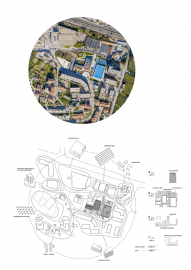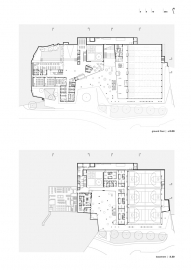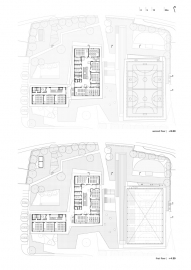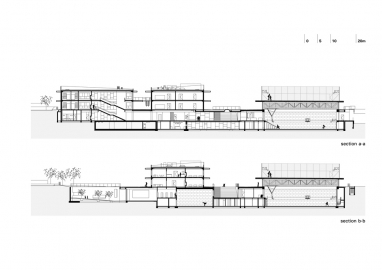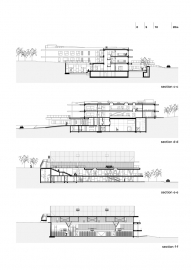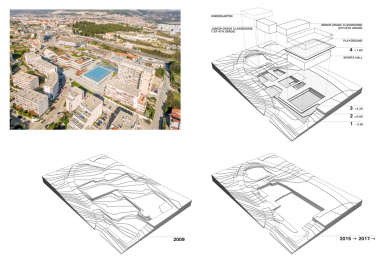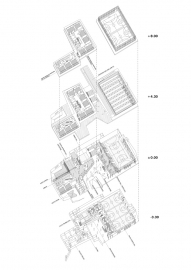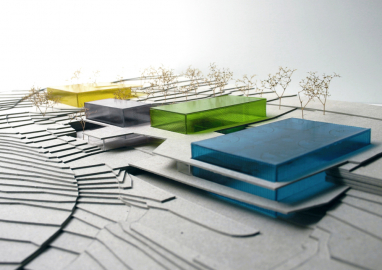'Žnjan - Pazdigrad' Primary School
The project is located on the outskirts of Split, in an area that has for at the least 20 years been in transition from agricultural suburbia to a ‘proper’ residential quarter. Due to a lack of public amenities and spaces in the nearby vicinity, the school is designed not just as a place of education, but also as a collective space for the entire neighbourhood.
The project comprises an extensive educational programme for 720 pupils: 8 class-teaching (1-4 grade) classrooms, 12 subject-teaching (5-8 grade) classrooms, an assembly hall with a stage, a library, a dining area and kitchen, a large and a smaller sports hall for physical education accompanied by outdoor playgrounds and an athletics field.
The learning spaces for class-teaching and subject-teaching, and a large sports hall constitute three volumes, while the other spaces and programmes are fluidly organised in-between and are interconnected on four levels. The vertical organisation facilitates the functional one: the basement serves as a space for gymnastics and sports, the ground floor as a central assembly space with a public passage separating the school from the sports hall entrance, and the first and second floors are reserved for teaching and studying.
In the peripheral surroundings where housing blocks, family houses, small workshops, shopping malls, gardens and greenhouses peacefully coexist, while the entire area suffers from an extreme shortage of public spaces and social amenities, the new primary school was a long-awaited project. Protests demanding immediate construction helped to shape a sense of community.
The site, located on a steep and descending terrain, was too small to facilitate the required programme, so a new topography was created to multiply the available space. A series of platforms (decks), one above the other, enable the school areas and sports facilities to intertwine with open, multipurpose spaces and ambiences, while the whole spatial structure serves as a generator of indoor and outdoor activities and experiences. Through the design process, the public space area (12.100 m2) obtained has become larger than the entire site area (11.600 m2) offering the community a wide array of outdoor collective spaces.
The project design is based on exposing the structure: columns, slabs, brise-soleils and walls simultaneously support the building structurally, and act as its façade and most important interior element.
Light grey cast concrete dominates the overall appearance, in the interior complemented with polished terrazzo (the basement and ground floor communication areas and halls), oak wood (flooring in the classrooms and classroom corridors, joinery, inbuilt furniture) and acoustic ceilings. The colour accents in an otherwise rather neutral environment are the indoor and outdoor sports hall floorings, coupled with the finishes in servant spaces.
Nikola Đurek’s typography intervention on the façade provides an additional semantic layer and serves as a protection "skin" for the “intentional unfinishedness” of the project.

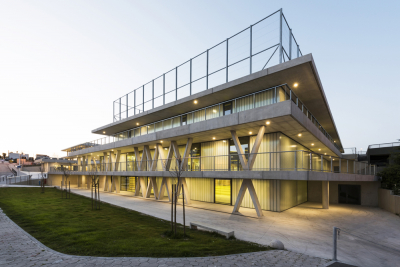 © Bosnić + Dorotić
© Bosnić + Dorotić
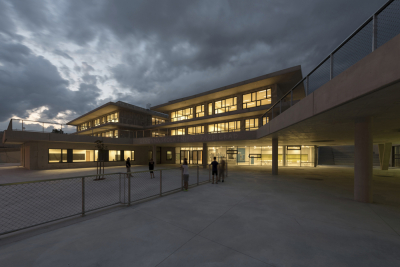 © Bosnić + Dorotić
© Bosnić + Dorotić
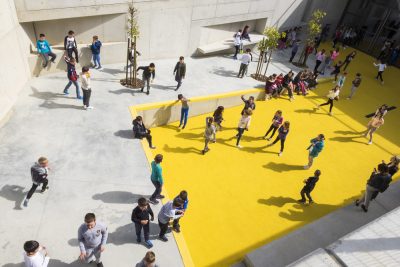 © Bosnić + Dorotić
© Bosnić + Dorotić
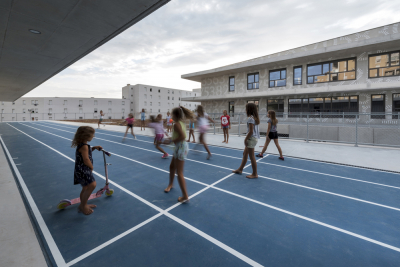 © Bosnić + Dorotić
© Bosnić + Dorotić
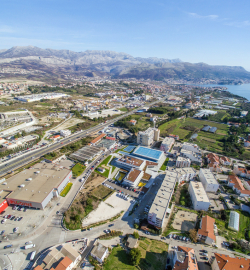 © Mario Dedić
© Mario Dedić
